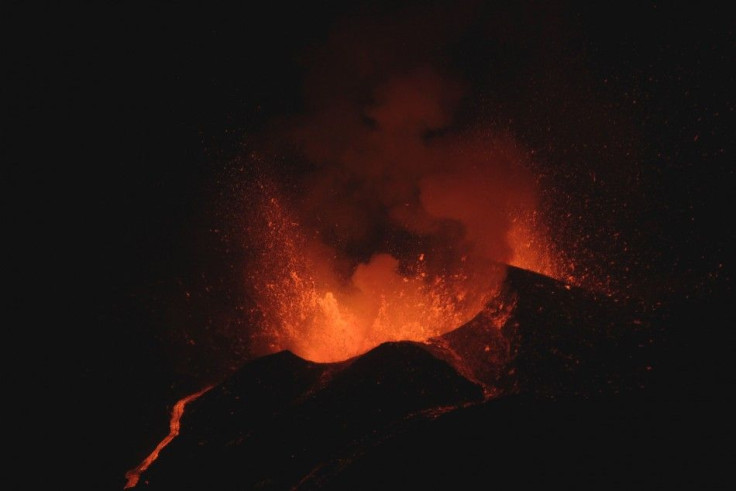Lava From Volcano Disrupts Two Villages In Africa

A footage was captured on Fogo Island, which is one of the southernmost islands in the archipelago of Cape Verde, showing lava destroying two villages. Along with the destruction of the villages, several hectares of agricultural land was also ruined and also threatens a forest reserve.
According to the Independent, the stream of lava was a result of the latest eruption of the largest volcano on Fogo Island called Pico do Fogo, an active stratovolcano and has a height of almost 2,900 meters. The volcano has constantly been erupting since Nov. 22.
The volcano had calmed down for a span of four days after the initial eruption but then last week, it started erupting again. Marisa Morais, minister of internal affairs, said that the eruption was fast moving. She also said that they were appealing to the people to keep calm.
Since 1995, this was the first time that a volcano has erupted, causing closure of the airport. It also resulted in the evacuation of more than 1,000 residents from the villages of Portela and Bangeira as well as the Cha das Caldeiras region on the island. A geophysicist, Bruno Faria, said that the initial blast of the volcano was greater than the one that took place in 1995.
The chief of the fire brigade and head of civil protection services, Arlindo Lima, said that on Dec 14, the lava had gained ground. He said that the lava front was more than 500 meters north of the houses in Bangeira about a week ago and had swept over most of the area of the village and it was still continuing to move forward. He said the village of Portela had also been destroyed.
It was also reported that it was one of the biggest eruptions since 1847. In 1847, the eruption brought about earthquakes which led to the killing of a number of people.
Arlinda Neves, a local journalist, said that there was a whole local economy and a way of life that had been claimed by the volcano in a span of just 22 days. She added that a century and a half of history had been wiped out as some of the buildings that dated back to the 1860s had been destroyed.




















